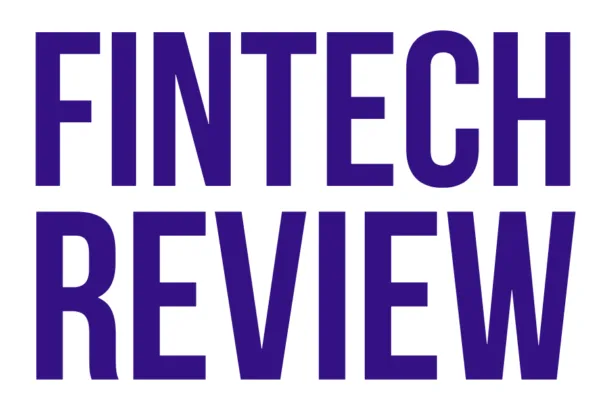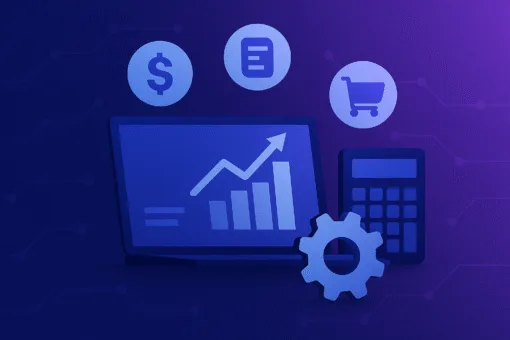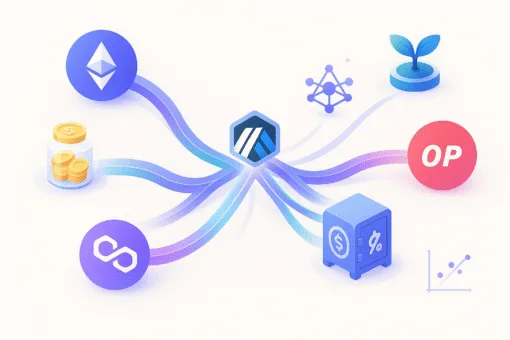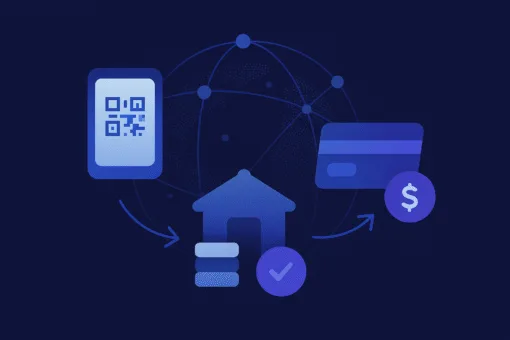By Jishith Gangadharan from Clayfin.
Scaling AI systems across the board has proven to be quite a problem, even if the majority of banking industry AI projects have so far shown promising results. DataQuest reports that 74% of banking executives think new technology will have an impact on their industry. They worry, nevertheless, that incorrect implementation might severely impede the process by widening skills gaps and increasing complexity. They are not wrong.
Before the banking industry can fully profit from AI, it must overcome the following obstacles.
Large infrastructure investments
The banking industry has historically spent little on information technology. But in recent years, this has changed as more banks have started spending millions on infrastructure upgrades. However, up until recently, dependability and stability were the primary concerns of any technological improvement. As a result, these legacy systems lack the adaptability of cloud-based infrastructure. These systems can quickly analyze and give insights after sifting through reams of data in real-time. In order to guarantee that they have access to the appropriate data in real-time, banks also require API-enabled platforms that connect smoothly with other systems and apps. Numerous executives are reluctant to make the significant expenditures necessary to modernize the financial IT infrastructure. Mostly due to the dangers involved.
Incorrect data sources or siloed data
Legacy systems also suggest that there are data silos with little to no means to intelligently combine different data sources. It is common knowledge in AI that the class of the data influences the quality of the insights produced. Any good AI system has this at its basic foundation. However, there are several difficulties present in the banking industry. The financial industry is rife with problems related to data security and compliance. In addition to the fact that various departments store their data in various systems.
In the financial industry, errors can sometimes prove to be highly expensive. Incorrect data supplied into a trading algorithm might result in poor trading recommendations and significant financial loss. Data biases must be managed carefully since they can have a significant influence on customers’ lives. By updating their data architecture, identifying reliable new data sources, and developing appropriate algorithms to model data and draw insights, the majority of banks need to mature their data mining process.
Banks must make the appropriate investments if they want to thrive. Since the window of opportunity for first movers is steadily closing as more people jump on board.
Finding employees with the necessary skill sets
More than ever, the banking industry requires individuals with advanced AI skills. In the past year, job postings for AI positions in the banking industry have grown by 60%. The banking industry is also looking for non-technical roles in addition to data analysts and engineers. These roles include chatbot copywriters who create conversational text that supports and engages customers rather than spitting out jargon-filled technical answers. But also experience designers who can create meaningful computer-human interactions, product managers who lead these AI projects, and many more. However, highly qualified individuals who are familiar with the financial industry are hard to find. Because of incorrect execution, many AI systems are halted or rendered useless.
Choosing the best governance and strategy

Shifting assumptions, systems, and procedures on their heads is necessary to reimagine banking in an AI era. Lack of sound strategy and governance is one of the main reasons banks are unable to effectively go from proof of concept to mainstream AI adoption. A clear approach makes it easier to decide where and how AI should be used. It comprises a precise change management plan that will aid in the banking entity’s future transformation. To ensure a successful deployment, these procedures are essential. However, although strategy aids in the initial process of planning, excellent governance is crucial to ongoing AI practice. Identifying and protecting best practices ensures a successful AI endeavor.
Overcoming hesitation
Despite the fact that AI has been around for a while, there is still some mistrust and concern among workers that AI will take their jobs. The banking sector is the same. The truth is that while AI will undoubtedly outperform humans at some monotonous tasks, its true strength comes from its interaction with people. For instance a study done by medical professionals who developed an AI-based system that could recognise breast cancer cells. The AI software achieved a high accuracy score of 92 percent on its own. But this was still behind the success rate of human pathologists, who achieved a score of about 96 percent. The success rate was an incredible 99.5 percent, though, when AI and human pathologists worked together.
Banks must address the anxiety and reluctance that teams may have as part of an effective change management plan. Teams that feel as though their jobs are in threat won’t fully collaborate with the digitisation process. That is putting every AI endeavor in danger. The only choice left to managers now is to retrain people to work alongside machines rather than against them.
Why outsourcing is beneficial
Many are looking to outsourcing as the herald of hope as the banking industry struggles to get its AI initiatives off the ground. The banking sector is hardly a newcomer to outsourcing. Nearly 77 percent of all retail banks outsource at least one aspect of their business operations. Banks have historically outsourced customer verification and other non-business-critical tasks. But today they are looking to outsource in order to acquire a competitive edge while also assuring cost savings.
It is obvious that the majority of banks worldwide want some sort of aid. Regardless of how they intend to employ outside assistance. Banks should outsource the majority of their AI projects, if not all, to competent partners for the following five reasons.
- Investing in the appropriate technological infrastructure. A proper AI deployment requires significant up-front technological investments, as was covered in the preceding section. External suppliers have the necessary infrastructure in place to properly undertake an AI effort, but most banks recoil at the thought of spending a huge sum when so much is at stake. This is a logical progression from the current practice, in which the banking industry outsources its IT functions. A detailed awareness of the right technology stack to utilise, how to use it, when to scale, risks, restrictions, advantages, and more is also possessed by AI practitioners.
Five reasons to transform

- Data accessibility. While banks own reams of financial information, client information is dispersed throughout the online world of social media, emails, online stores, and other platforms. Banks need to take similar steps to aggregate and monetize this data as the world of digital advertising has done. Legal access to use this information in most AI partners’ implementations is currently available. These vast reservoirs of consumer data combine nicely with the bank’s own knowledge of its clients and will provide insights that will enable banks to upsell and cross-sell more successfully. Additionally useful for combating fraud, this information. With sufficient information on a client, every transaction that is carried out by a customer is assessed holistically, where appropriate flagging possible hazards. Additionally, there are a few elements of data administration that need specialised knowledge. Although bankers often lack these abilities, they are essential to an AI vendor’s operation. These labor-intensive procedures, which include data mining, classification, clustering, regression, and pattern recognition, demand specialised resources. In addition to lacking these skill sets, the banking industry lacks the financial means to significantly raise its personnel in order to have the resources necessary to transform enormous volumes of data into insight.
- Skillsets on-demand. Since AI is now the most in-demand skill across all markets, AI partners have access to a wide range of skillsets at any one time. When AI is outsourced to a reliable provider, scaling up or down a team is rather straightforward. According to the Digital Banking Report, banks contracted with both current (50 percent) and new (43 percent) suppliers to acquire the necessary capabilities. The study continues, “A strong ecosystem of partnerships enables banks and credit unions to experiment, learn, and, in the end, develop capabilities that are essential to adapt to acute and chronic disruption. Ecosystems provide organisations access to a wider spectrum of prospective collaborators and ideas, allowing them to function more flexibly. This increases the quantity, quality, and risk tolerance of experimentation and learning.
Prior digital transformation experience
- Prior experience using an AI strategy. Banks may place their bets on seasoned professionals who regularly use AI systems, as opposed to betting on a horse that is still learning to race. While many managers might feel at ease employing internal resources, the majority of banking professionals lack the knowledge or education necessary to effectively complete an AI installation. As opposed to this, AI partners and vendors have a depth of expertise that has been refined via several AI projects. Vendors come in with the necessary technical expertise—some of them even have the necessary domain expertise—for anything from best practises to adopt when it comes to governance to executing change management inside a bank. With a partner whose primary goal is to effectively deploy AI projects, staying up to speed on current developments in AI, new tools and platforms, and more is more likely than it is with an internal team, no matter how devoted they may be.
- Faster speed to market: The main benefit for banks of outsourcing their AI function is that it is a ready-made solution that is practically plugged and play in nature. This guarantees that banks are prepared to launch AI-enabled solutions in a matter of days as opposed to months. Building an internal team is a challenging approach that will produce results months after the launch of the programme. An outside vendor shortens that period to, at most, a few months. And there is a better possibility of getting the desired outcomes.
Bottom line…

In conclusion, AI is changing the way banks operate. Banks must decide whether they will take the difficult route of developing the knowledge in-house or if they will engage a third-party expert as many banks transition from experimenting with a proof-of-concept to a full-fledged AI practise. The third-party AI partner is clearly superior, but both strategies offer advantages and disadvantages. Banks may concentrate on their core competencies while gaining the advantages of an established AI practise by outsourcing AI to a reliable partner.
About the author
Jishith is a marketing strategist with more than 16 years experience in the IT industry. He has extensive experience across various facets of marketing in the industry. Jishith spearheads marketing and communications for Clayfin. Outside the office, he enjoys traveling, reading and aquascaping.














